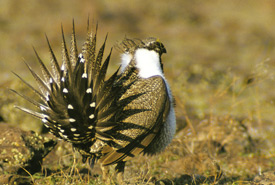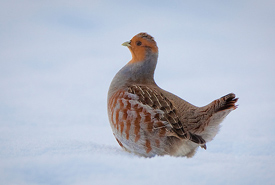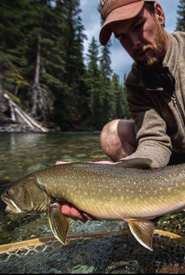Out of sight, out of mind

Greater sage-grouse (Photo by Gordon Sherman © Audubon Canyon Ranch)
Now and then, I look out my living room window and begin to search. I am not searching for anything in particular, it is simply by habit. I can spend 20, or even 30, minutes just gazing here and there at just about anything. Little brown birds nervously take in seeds while fighting zealously to defend their spot on the feeder hanging just below the eaves trough. Black-capped chickadees fluff out their plumage to stay warm, seemingly doubling in size and make for a small, unassuming scene in central Calgary in the dead of winter.
Yet, every so often my heart skips a beat from the sighting of a family, or covey, of partridge; a feeling indistinguishable from the cold sweat you get when you miss a step in a dark stairwell. These are Hungarian partridges, otherwise known as grey partridge or huns, and this is my covey. I don’t own them, but I like to think (as I comfortably refill my coffee) that they rely on my feeders for emergency food stocks. A ridiculous notion, since they lived here long before I moved in and are obviously doing well, given that they are twice the size of rural huns. Regardless, I am always elated to see them as they flap away in that rushed, ungraceful way that partridge do.

Hungarian partridge (Photo by Nelson Kenter)
Huns are an introduced species, like the pheasant. My older brother likes to tell an old story about a small farm in south-central Saskatchewan that released several pairs. Within a few years, the population on the farm exploded so much so that a hunting season opened.
Like hun, some grouse species are game birds, yet unlike hun and pheasant, are native to Alberta. These include species such as sharp-tailed grouse, ruffed grouse, spruce grouse, blue grouse (dusky and sooty grouse) and greater sage-grouse. You can always tell a native species by its furry feet; an adaptation to withstand the harsh winter months.
The huns share some of the same habitat as the sharp-tailed grouse. Both species prefer open grassland punctuated with shrubbery and tall grasses for cover, and you can often find sharp-tailed grouse around wild rose bushes, eating the frostbitten rose hips in late fall. Due to an increase in agricultural activity, habitat loss and fragmentation, this species has been in a slow decline in Alberta. Agricultural practices can alter the landscape and diminish the crucial parkland and grassland territories on which this species relies.
The greater sage-grouse is another matter. I personally have never seen this species in the wild, but have become aware of it through hunter safety, conservation awareness and a documentary called The Sagebrush Sea. The males look almost too exotic for our continent. Their display is aggressive, large, proud and, with their teeth-like tail plumage, they look almost threatening. They are the largest grouse species in North America, and it seems like they are well aware of it.
The greater sage-grouse was designated as threatened in 1997, endangered in 1998 and granted an Emergency Protection Order in 2013 by the federal government. Currently, Canada’s population of greater sage-grouse consists of only one percent of the world’s total population. They are exclusively a sagebrush species and, in Canada, are limited to Alberta and Saskatchewan’s southernmost regions. Currently, the Canadian sage-grouse population has declined to under 100 individuals. Thankfully, there are provincial recovery plans commissioned under the Species at Risk Act, Wildlife Act, National Framework for the Conservation of Species at Risk and the Accord for the Protection of Species At Risk to help rehabilitate this species.
It is -18 C in Alberta, and the frost on my windows is slowly winning ground and obscuring the view I so often gaze at. Outside my front door are a multitude of living organisms fighting to survive this recent cold snap. Some are doing well, and some are needing our help.


